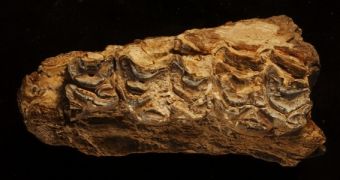Scientists at the Case Western Reserve University (CWRU) School of Medicine announce the discovery of a 4.4-million-year-old horse fossil. in an area of Ethiopia known for its high fossil content. Details of the creature appear in a recent online issue of the Journal of Vertebrate Paleontology.
The animal, of which only a jaw bone, some teeth and leg fragments were discovered, is believed to have been a juvenile of a species that grew no larger than modern-day zebras. The region where the animal lived would have been covered exclusively in grasslands and shrubby woods, LiveScience reports.
The discovery was made in the Middle Awash valley, at two dig sites called Aramis and Gona. Both are known for their high fossil content, which includes human bones as well. The newly-found animal was named Eurygnathohippus woldegabrieli.
Analysis of the bones recovered to date indicates that the ancient horse had longer legs than its predecessor, probably in order to escape natural predators such as saber-tooth cats and lions. Additionally, its teeth suggest that it was one of the first species of horses to adapt to continuous grazing.

 14 DAY TRIAL //
14 DAY TRIAL //